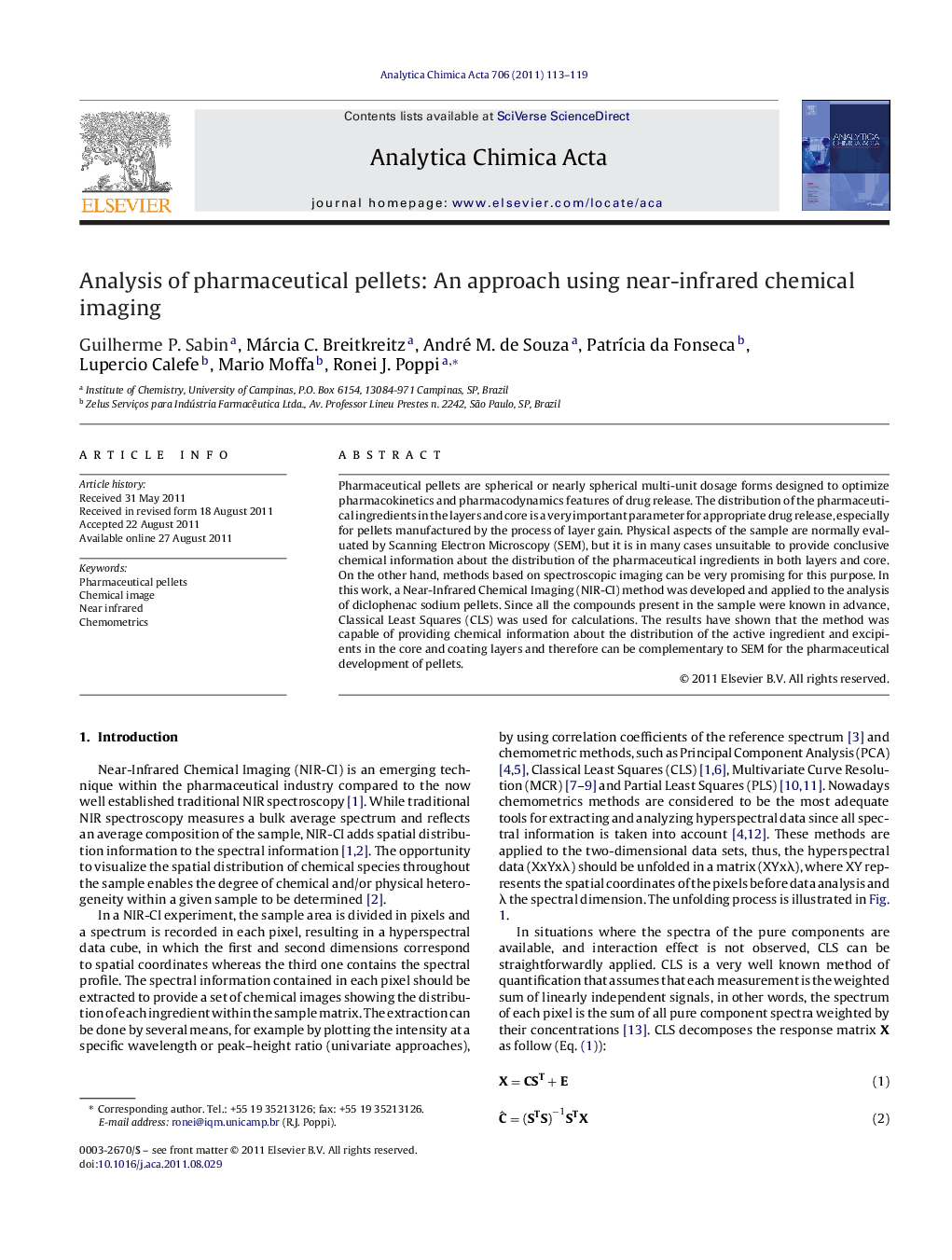| Article ID | Journal | Published Year | Pages | File Type |
|---|---|---|---|---|
| 1166498 | Analytica Chimica Acta | 2011 | 7 Pages |
Pharmaceutical pellets are spherical or nearly spherical multi-unit dosage forms designed to optimize pharmacokinetics and pharmacodynamics features of drug release. The distribution of the pharmaceutical ingredients in the layers and core is a very important parameter for appropriate drug release, especially for pellets manufactured by the process of layer gain. Physical aspects of the sample are normally evaluated by Scanning Electron Microscopy (SEM), but it is in many cases unsuitable to provide conclusive chemical information about the distribution of the pharmaceutical ingredients in both layers and core. On the other hand, methods based on spectroscopic imaging can be very promising for this purpose. In this work, a Near-Infrared Chemical Imaging (NIR-CI) method was developed and applied to the analysis of diclophenac sodium pellets. Since all the compounds present in the sample were known in advance, Classical Least Squares (CLS) was used for calculations. The results have shown that the method was capable of providing chemical information about the distribution of the active ingredient and excipients in the core and coating layers and therefore can be complementary to SEM for the pharmaceutical development of pellets.
Graphical abstractFigure optionsDownload full-size imageDownload as PowerPoint slideHighlights► Near-Infrared Chemical Imaging was used for pellets analysis. ► Distribution of the components throughout the coatings layers and core of the pellets was estimated. ► Classical Least Squares (CLS) was used for calculation of the concentration maps.
